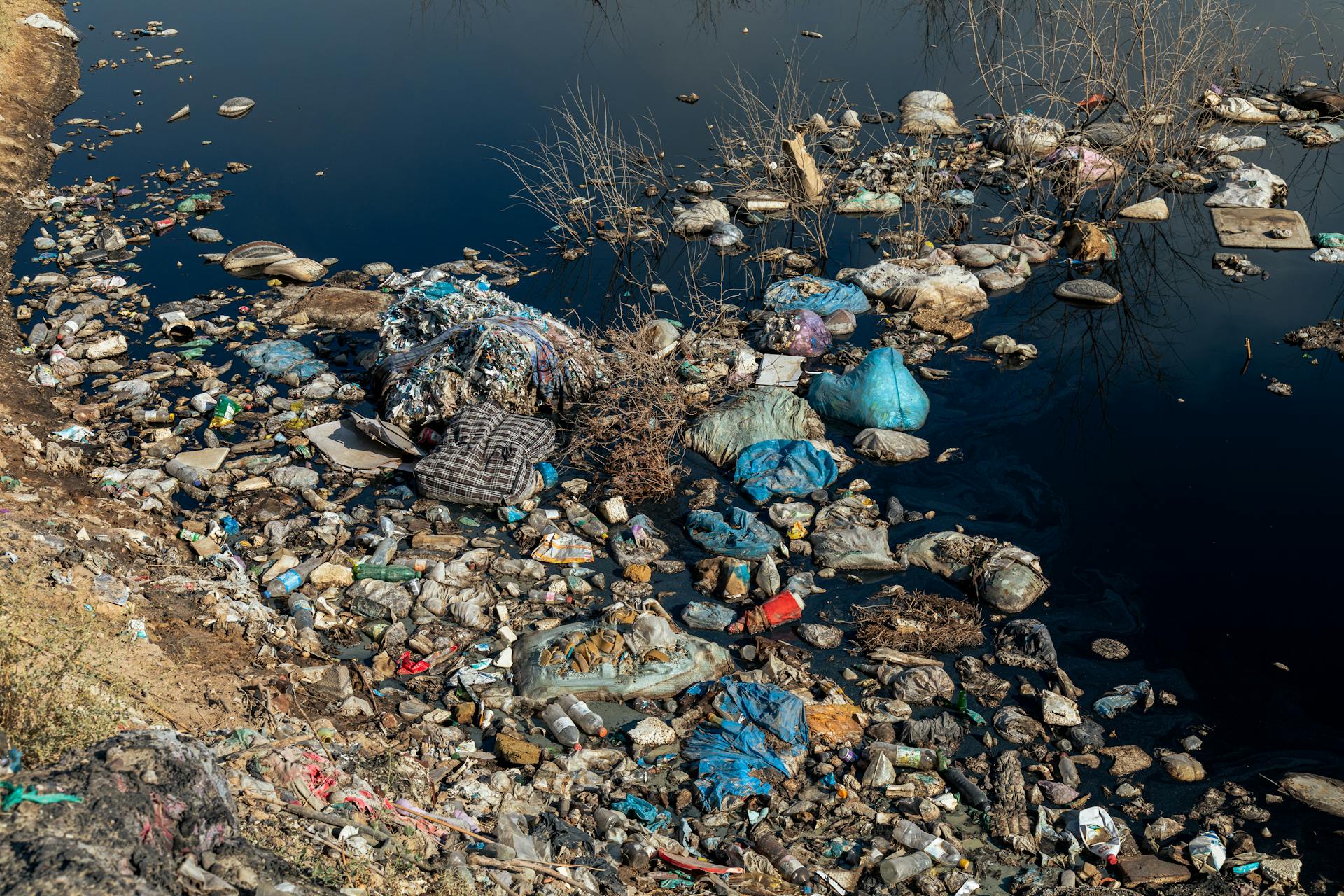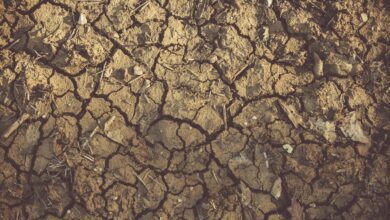The Impact of Water Pollution on the Environment and Human Health

In this comprehensive exploration, we will unravel the intricate web of causes, types, and impacts of water pollution, shedding light on its devastating effects on human health, the environment, and the global economy. Furthermore, we will delve into the preventive measures and global initiatives aimed at combating this silent killer, emphasizing the urgent need for collective action to safeguard our most precious resource.
Causes of water pollution
Water pollution can stem from a multitude of sources, both natural and human-induced. Among the primary culprits are:
- Industrial Effluents: Untreated or inadequately treated wastewater discharged from factories, manufacturing plants, and other industrial facilities can introduce a myriad of toxic substances, heavy metals, and harmful chemicals into water bodies.
- Agricultural Runoff: Excessive use of fertilizers, pesticides, and animal waste from farming operations can lead to nutrient overload and chemical contamination of nearby water sources.
- Sewage and Domestic Waste: Improper disposal of household and municipal waste, as well as untreated sewage, can introduce pathogens, organic matter, and other pollutants into water systems.
- Oil Spills and Leaks: Accidental or deliberate releases of oil and petroleum products from tankers, pipelines, and offshore drilling operations can have devastating effects on marine and coastal ecosystems.
- Urban Runoff: Stormwater runoff from cities and urban areas can carry a cocktail of pollutants, including chemicals, sediments, and litter, into nearby water bodies.
Types of water pollution
Water pollution can take various forms, each with its own unique characteristics and impacts. The main types include:
- Chemical Pollution: The presence of harmful chemicals, such as heavy metals, pesticides, and industrial solvents, can have toxic effects on aquatic life and human health.
- Nutrient Pollution: Excessive levels of nutrients, primarily nitrogen and phosphorus, can lead to algal blooms and depletion of dissolved oxygen, creating “dead zones” in water bodies.
- Microbiological Pollution: The contamination of water by pathogenic microorganisms, such as bacteria, viruses, and protozoa, can pose serious health risks, particularly in areas with inadequate sanitation and water treatment facilities.
- Thermal Pollution: The discharge of heated water from industrial processes or power plants can disrupt the delicate balance of aquatic ecosystems, affecting the survival and reproduction of various species.
- Sediment Pollution: Excessive sedimentation, often caused by erosion and construction activities, can cloud water bodies, reducing light penetration and impacting aquatic habitats.
Also read: Understanding the Different Types of Pollution: A Comprehensive Guide
Impacts of water pollution on human health
The consequences of water pollution on human health are far-reaching and severe. Exposure to contaminated water can lead to a wide range of illnesses and diseases, including:
- Waterborne Diseases: Pathogens present in polluted water can cause life-threatening diseases such as cholera, dysentery, and typhoid fever, particularly in regions with poor sanitation and limited access to clean drinking water.
- Cancer and Birth Defects: Certain chemicals and heavy metals found in polluted water, such as lead, mercury, and persistent organic pollutants (POPs), have been linked to an increased risk of cancer and birth defects.
- Gastrointestinal Illnesses: Consuming water contaminated with bacteria, viruses, or parasites can lead to severe gastrointestinal problems, including diarrhea, vomiting, and abdominal cramps.
- Neurological Disorders: Exposure to pollutants like lead and mercury can have detrimental effects on the nervous system, potentially leading to developmental delays, learning disabilities, and cognitive impairment, particularly in children.
- Skin and Respiratory Issues: Contact with or inhalation of polluted water can cause skin irritations, rashes, and respiratory problems, such as asthma and lung infections.
Environmental consequences of water pollution

Water pollution not only poses a threat to human health but also inflicts severe damage on the natural environment, disrupting delicate ecosystems and jeopardizing biodiversity. Some of the most significant environmental impacts include:
- Aquatic Life Degradation: Pollutants can directly harm or kill fish, plants, and other aquatic organisms, leading to a decline in biodiversity and disrupting the entire food chain.
- Habitat Destruction: Pollution can alter the physical and chemical properties of water bodies, rendering them unsuitable for many species and contributing to habitat loss.
- Eutrophication: Excessive nutrient pollution can trigger algal blooms, depleting oxygen levels and creating “dead zones” where aquatic life cannot survive.
- Bioaccumulation and Biomagnification: Certain pollutants, such as heavy metals and persistent organic pollutants (POPs), can accumulate in the tissues of living organisms, magnifying their concentrations as they move up the food chain.
- Ecosystem Disruption: Water pollution can disrupt the delicate balance of aquatic ecosystems, altering species interactions, food webs, and overall ecosystem functioning.
Economic impact of water pollution
The economic consequences of water pollution are far-reaching and multifaceted, affecting various sectors and industries. Some of the most significant economic impacts include:
- Healthcare Costs: The treatment of waterborne diseases and illnesses caused by water pollution places a substantial burden on healthcare systems, resulting in increased costs for individuals, families, and governments.
- Loss of Productivity: Water-related illnesses can lead to missed work days, reduced productivity, and decreased economic output, impacting both individuals and businesses.
- Decreased Property Values: Properties located near polluted water bodies often experience a decline in value, affecting real estate markets and property tax revenues.
- Ecosystem Service Losses: The degradation of aquatic ecosystems can result in the loss of valuable ecosystem services, such as water purification, flood control, and recreation opportunities, with significant economic implications.
- Clean-up and Remediation Costs: Addressing water pollution often requires costly clean-up and remediation efforts, diverting resources from other economic activities and straining government budgets.
Also read: The Hidden Danger: Exploring the Impact of Radioactive Pollution
Prevention and control measures
Combating water pollution requires a multifaceted approach involving individuals, communities, industries, and governments. Some effective prevention and control measures include:
- Wastewater Treatment: Implementing and improving wastewater treatment systems, both industrial and municipal, is crucial for reducing the discharge of pollutants into water bodies.
- Sustainable Agricultural Practices: Adopting techniques such as integrated pest management, precision agriculture, and proper nutrient management can minimize agricultural runoff and protect water resources.
- Solid Waste Management: Proper collection, treatment, and disposal of solid waste, including household and industrial waste, can prevent pollutants from entering water systems.
- Green Infrastructure: Incorporating green infrastructure solutions, such as permeable pavements, rain gardens, and constructed wetlands, can help capture and filter stormwater runoff before it reaches water bodies.
- Public Education and Awareness: Promoting public awareness campaigns and educational programs can empower individuals to make informed choices and adopt sustainable practices that reduce their impact on water resources.
Global initiatives to address the problem
Recognizing the global nature of water pollution and its far-reaching consequences, various international organizations and initiatives have been established to tackle this pressing issue. Some notable examples include:
- United Nations Sustainable Development Goals (SDGs): Goal 6 of the SDGs specifically targets ensuring access to clean water and sanitation for all, emphasizing the need for sustainable management of water resources and reducing water pollution.
- Global Partnership on Nutrient Management (GPNM): This partnership aims to promote effective nutrient management strategies to minimize nutrient pollution and its impacts on water bodies, ecosystems, and human health.
- International Water Association (IWA): The IWA brings together water professionals from around the world to share knowledge, develop solutions, and promote best practices in water management, including addressing water pollution challenges.
- Regional Conventions and Agreements: Various regional conventions and agreements, such as the Convention on the Protection of the Marine Environment of the Baltic Sea Area (Helsinki Convention) and the Convention on the Protection and Use of Transboundary Watercourses and International Lakes (Water Convention), facilitate cooperation and collective action among countries to address water pollution issues.
Case studies of water pollution incidents
Throughout history, numerous water pollution incidents have served as stark reminders of the devastating consequences of neglecting our water resources. Two notable examples include:
- Minamata Disease in Japan: In the 1950s and 1960s, the release of methylmercury from a chemical plant into Minamata Bay led to widespread mercury poisoning among local residents who consumed contaminated fish and shellfish. This tragic incident resulted in severe neurological disorders, birth defects, and numerous deaths, highlighting the grave impacts of industrial pollution on human health and the environment.
- Cuyahoga River Fire in the United States: In 1969, the heavily polluted Cuyahoga River in Cleveland, Ohio, caught fire due to the high levels of industrial waste and debris it contained. This incident garnered national attention and played a pivotal role in the establishment of the Clean Water Act and the creation of the Environmental Protection Agency (EPA), marking a turning point in the United States’ approach to environmental protection.
These cases serve as powerful reminders of the urgent need for comprehensive and proactive measures to prevent and mitigate water pollution, ensuring the protection of human health, ecosystems, and the overall well-being of our planet.
Conclusion: The urgent need to combat address the problem
Water pollution is a silent killer that threatens the very foundations of life on our planet. Its impacts extend far beyond the boundaries of our waterways, affecting human health, ecosystems, and economic prosperity. As we grapple with the consequences of our actions, it is imperative that we embrace a collective responsibility to safeguard this invaluable resource.
Through concerted efforts, involving individuals, communities, industries, and governments, we can implement effective prevention and control measures, promote sustainable practices, and foster a culture of environmental stewardship. By addressing the root causes of water pollution and adopting a holistic approach, we can ensure access to clean water for all, protect fragile ecosystems, and pave the way for a sustainable future.
Join the movement to combat water pollution by taking action in your daily life. Reduce your water consumption, properly dispose of household chemicals, and support organizations working to protect our water resources. Together, we can make a difference and safeguard the precious gift of clean water for generations to come.




